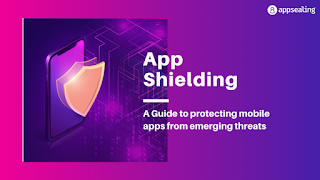Everything you need to know about app shielding
In recent times there has been a surge in the number of apps
being developed and downloaded across the globe. But as these numbers increase,
there has also been an increase in the number of hacking incidents and data
breaches. Moreover, securing apps is becoming extremely difficult, given that
adversaries have advanced tools and software at their disposal as well.
Although securing apps is a herculean task, it can be effectively done with the
help of application hardening
and app shielding.
What is App Shielding?
App shielding is
essentially a crucial security measure that helps the app in building
resistance to intrusion. It is capable of blocking attack attempts and secures
your app as well as your brand from dire consequences of security breaches. As
the name suggests, app shielding acts as a shield and prevents hackers from
initiating attacks or penetrating the app. It consists of a number of
techniques that help in preventing the manipulation of code and other similar
security issues.
Just like app wrapping,
shielding also takes a proactive approach and works towards preventing attacks
rather than just reacting to the attack. Given that mobile apps are becoming
increasingly prone to attacks, shielding can provide a much-needed protection
against breaches and loss of confidential data that can damage the reputation
of your company and result in the loss of customer loyalty.
What are the important App Shielding Techniques?
App shielding essentially uses three different types of
techniques to increase the levels of security. They are as follows:
1.
Code
Obfuscation
Code obfuscation essentially helps in protecting the IP and prevents attackers from using reverse engineering to gain access to sensitive data. The code is changed in a way that the app behaviors remain unchanged. However, it becomes confusing for the attackers.
Variable names and useful classes are renamed. Code
encryption is used, any meta data that is revealing is removed and the binary
of the app is filled with irrelevant codes. Along with these, developers also
change the codes without changing the structure of the app. This makes it
difficult for adversaries to keep a track of the changes and thus, making it
difficult for them to attack the app.
2.
Whitebox
Cryptography
Sensitive data is usually stored in the device and this is
rather easy to access and hence, can be misused. Encryption keys that are
exposed provide an opportunity to attackers. Whitebox cryptography helps in
successfully protecting as well as hiding the encryption keys. It produces a
cryptographic architecture that is unique in nature and hides the algorithms so
that they don’t appear clearly in the device’s memory. This helps in protecting
crucial data. This process makes it harder for attackers to look for the
original key.
3.
Anti-tampering
This stops the attackers from finding out the decryption
method that helps them in gaining access to the software. This technique uses
obfuscation as well but adds another layer of security. This makes it much more
difficult for attackers to decode the encryption.
Conclusion
App shielding has several advantages - it can not only
detect and prevent attacks but it also has quick response capabilities. It is
important for your mobile app to be secure if you want to provide a seamless
user experience to your customers. Hence, app shielding is crucial if you don’t
want to compromise your app security and risk your data.




Comments
Post a Comment